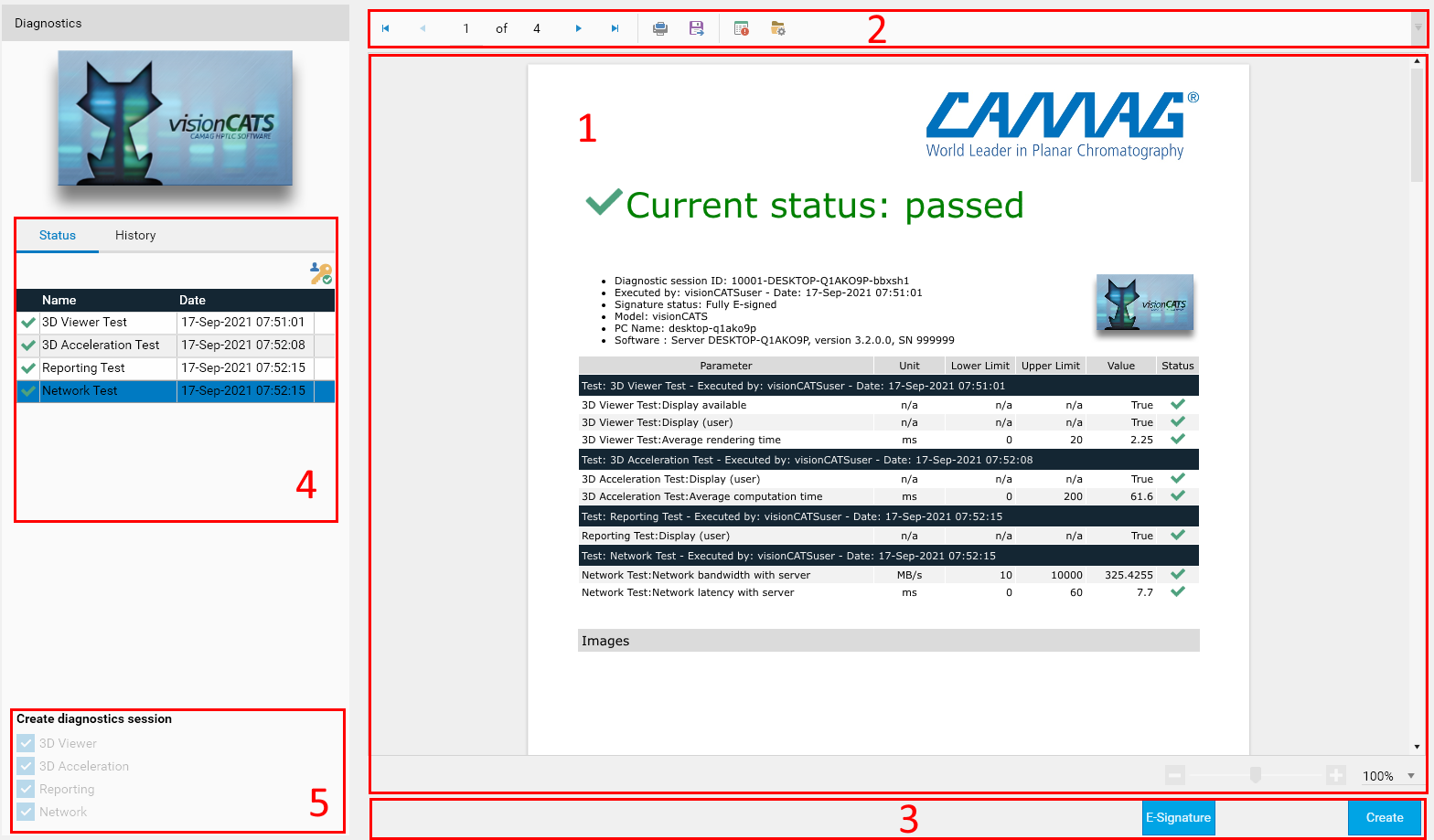Instrument diagnostics
Diagnostics are important for checking that the instruments and visionCATS work as desired, and in some cases to calibrate some values. They are a part of the instrument OQ.
The diagnostics status will be reminded to the user in several places in the software:
It marks any instrument with an invalid (or missing) diagnostics
Diagnostics will soon be out of date (only for HPTLC PRO Modules, see below)
Diagnostics expiration for HPTLC PRO Module
The diagnostics of HPTLC PRO Modules are valid 1 year. In other words, there is an expiration date and the diagnostics are invalidated automatically when they expire.
1 month before the expiration date, visionCATS indicates that the diagnostics will soon expire.

Diagnostics view
Instrument diagnostics and visionCATS client diagnostics use a similar view.

The report of the selected diagnostics session is displayed on the right (1)
The toolbar (2) is similar to the one from analysis report, see Preview.
Action buttons (3) are available at the bottom to create, run or abort diagnostics, and to perform the E-Signature of diagnostics (see E-Signature).
Diagnostic session selection (4)
Status displays the current diagnostics status (the last accepted session)
History shows all the previous sessions
Tests selection (5) allows you to select one or more test(s) to run
How to do the diagnostics
Click on Create button. A diagnostics report without result will be displayed.
Select at least one test to execute (5)
Click on Start button.
Follow the different hint popup to prepare the instruments. In some cases, you will need to approve or reject the result of a specific test.
At the end, you can either Accept or Abort the whole session. When accepting, the results of the selected tests will be used as current status.
Note
The diagnostics status is an aggregate of all type of tests: the latest result of a test type is used for each type, regardless of which session contains it.
For example, with an instrument having tests A, B and C, if the latest session only executed tests B and C, the status will display the result of test A from the previous session.